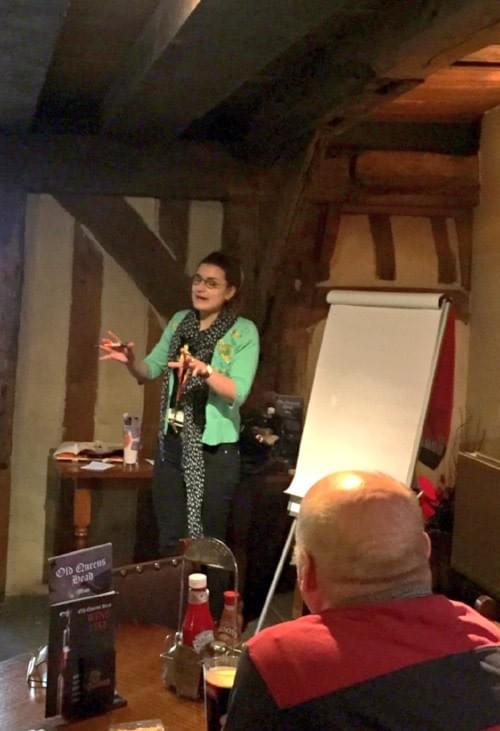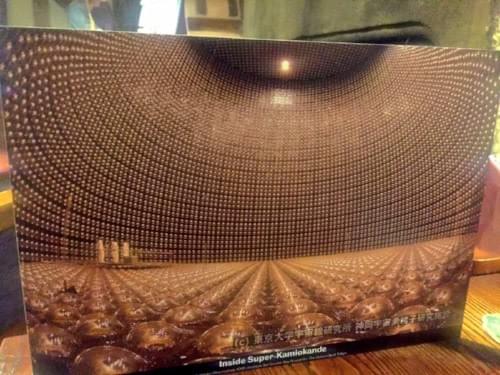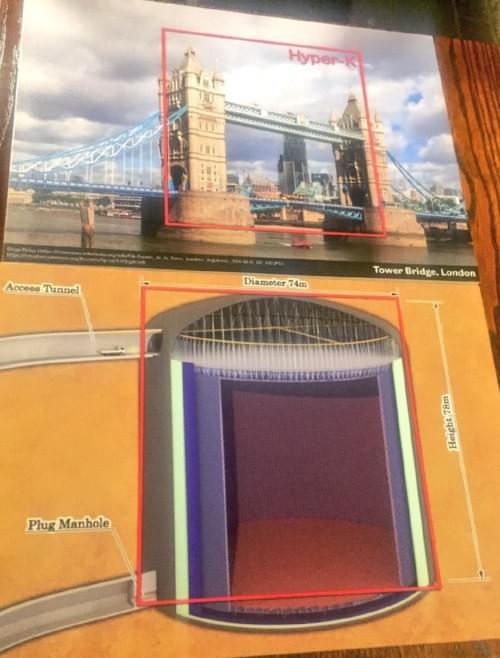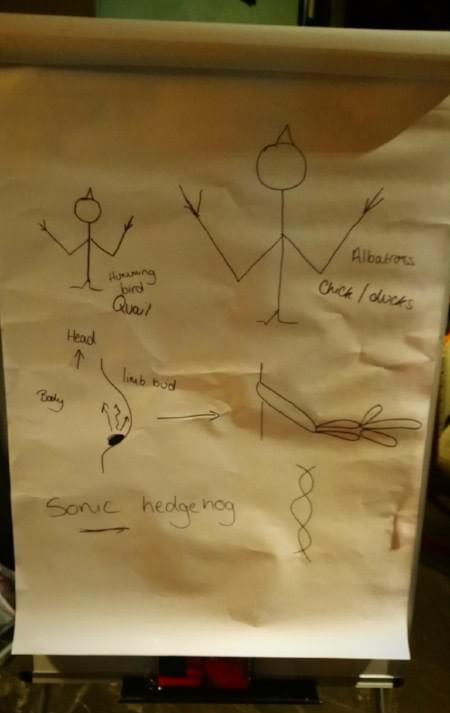PubhD Sheffield is BACK! With a new venue, new stationary and new speakers - so you know it’s set to be a great new programme of events! We have now moved to The Old Queen’s Head, a beautiful pub tucked behind the Sheffield Interchange, and a pub that also has a claim to fame through being the oldest one in Sheffield – don’t we just spoil you =P With some scrummy food in our bellies (yep, they serve food here too), we kicked off the night…

Our first speaker, Heloise, is a Physics and Astronomy PhD student at the University of Sheffield, who introduced us to the idea of supernovae – an explosion in the universe, caused by the death of a star. But firstly, what is a star? Simply put, a star is a big ball of plasma, consisting mostly of hydrogen and helium. They stay bright and intact through a balance between the force of gravity, which pushes the star inwards, and pressure from fusion, which pushes outward. Stars are constantly fusing atoms together – essentially forcing them together to make larger atoms that are higher up in the periodic table; this process releases lots of energy. In low mass stars fusion continues until the core is made of carbon, at which point fusion stops and the star loses its outer layers, becoming a white dwarf and forming a nebula. These white dwarves are capable of draining companion stars, and explode after reaching a critical mass. These supernovae release huge amounts of iron - including most of the iron on Earth! In high mass stars fusion continues until iron atoms are made, at which point fusion requires energy to take place. With no energy left to balance gravity, the core collapses - which can reach almost the same size as Sheffield! The outer layers collapse as well, and bounce off the dense core, creating a shock wave, which starts the explosion, but stalls in the star. This core collapse also releases lots of neutrinos. Neutrinos are tiny pieces of matter that rarely interact, but even the tiny fraction that does interact is enough to revive the shockwave and result in a supernova explosion! In Heloise’s research, she uses a massive telescope in Chile to study the shapes of supernovae, to discover theories on their evolution, and roles of supernovae in space.

Our second speaker, Jost, also from the department of Physics and Astronomy, continued on the theme of neutrinos, as this constitutes a big part of his PhD. He first explained that most of what we see through the telescope is the outside of stars and supernovae, but what he is interested in is what goes on inside them. Researchers have attempted to simulate what they think happens using computers, but Jost is going further than this with his experiments. He explained that neutrinos are nicknamed ‘ghost particles’ as they are capable of passing through everything. For example, 60 billion neutrinos from our sun could be passing through your thumbnail right now as you’re looking at it! To study neutrinos, Jost has been working with a detector called Super-Kamiokande, with plans to expand his work to a larger version, Hyper-Kamiokande in the next decade. It is basically a massive cylinder, built about 650m under ground, in a mountain in Japan. The structure is filled with water and has camera-detectors covering all inner walls, which are capable of detecting small flashes of light that are produced when neutrinos interact in the detector. Jost is using this to understand what happens during supernovae when lots of neutrinos are released, and also hopes his work might add to what we currently know and accept within atomic physics. (see the pics below for a sneak peak at the inside and scales of these detectors!)


Our final speaker, Holly, is a first year PhD student in the Department of Biomedical Sciences, at the University of Sheffield. She is interested in how different organisms develop to be different sizes, and what intrinsic signals tell developing animals when to start/stop growing. To do this, Holly is researching birds with different sized wings – for example comparing growth in an albatross versus a hummingbird. However these birds aren’t too common in Yorkshire, so she is instead using quails and chickens. She is specifically interested in a protein called Sonic Hedgehog (yes the person who discovered it was really into video games!), which is made in the chick embryo, during bird development. As the bird develops inside the egg, it starts to form a bud where each wing will emerge. At the bottom of this bud, Sonic Hedgehog is produced in a small cluster and, like the video game character, it runs and diffuses away from this start point. The different protein expression across the bud helps to control how the humorous, radius and final limb will be formed. Holly has seen that this protein sticks around for a longer period of time in the buds of birds with bigger wings. To test if this signal is responsible for the different growth between birds, she has transplanted the Sonic Hedgehog protein clusters from quails, into chickens. So far, she has shown that which ever species the cluster comes from, correlates with how long the Sonic Hedgehog is made for, and that it doesn’t get influenced by the new environment or new host! She has also seen that Vitamin A is important for Sonic Hedgehog production, so hopes to uncover why this happens. This is interesting as Vitamin A is found in huge amounts in lizards that can regenerate their tails. Therefore Holly’s research could also influence research into limb regeneration.

We’d like to say one last thank you to our speakers, and also to our audience for having so many great questions for them! We hope to see you next time, on Wednesday 4th October from 7pm – look out for updates on our Facebook and Eventbrite pages shortly, as we already have our speakers confirmed!

See you next month!
Emily and Devon